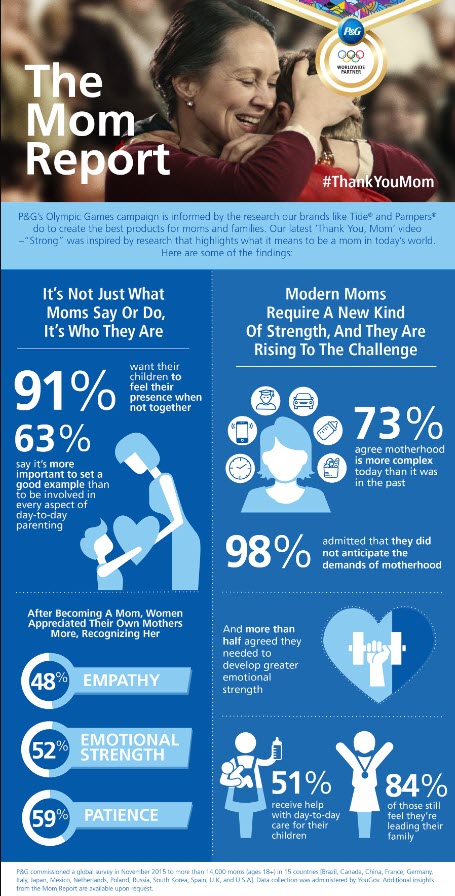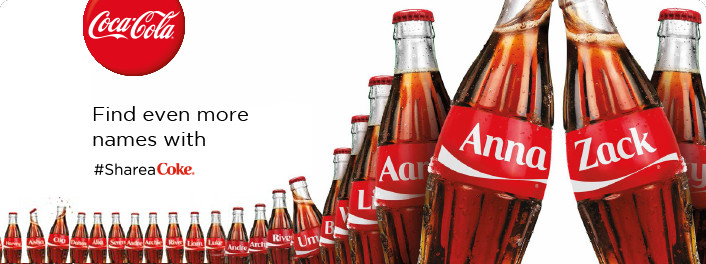
What Is Advocacy Marketing?
Advocacy marketing is a strategic approach that uses happy customers to naturally promote a brand or product, recognizing the impact of word-of-mouth and positive experiences on consumer opinions.
Instead of relying solely on traditional marketing efforts, companies are exploring the authentic experiences and positive sentiments of their customers, using social proof to shape consumer perceptions through digital marketing strategies.
By cultivating a community of brand advocates, businesses aim to amplify their reach and credibility through voluntary advocacy, taking advantage of this advocacy in marketing.
Here are 3 specific ways advocacy marketing is applied in practice (they are mainly inexpensive marketing ideas):
- Customer Testimonials: Keeping compliments to yourself is one of the biggest marketing mistakes. Feature authentic praise and stories from satisfied customers provide credibility and relatability, influencing potential buyers.
- Referral Programs: Incentivizing existing customers to refer friends amplifies reach while rewarding loyalty and strengthening the sense of community, overcoming one of the main challenges in marketing (the high costs of acquiring new customers).
- User-Generated Content: Encouraging customers to share their experiences on social media platforms generates organic content that resonates with potential buyers, creating a dynamic and engaging narrative around the brand.
Advocacy Marketing Examples
1. Apple’s “Shot on iPhoneâ€
Apple encouraged users to share photos taken with their iPhones. The “Shot on iPhone†campaign started with outdoor advertising, inspired by users globally hashtagging their iPhone-taken photos. It quickly grew into a worldwide movement across multiple countries, turning everyday iPhone users into brand ambassadors.
By simply using the hashtag #ShotOniPhone, anyone could showcase their work to a global audience, even leading to some of the first films shot entirely on iPhones. This user-generated content became a powerful advocacy campaign, showcasing the quality of iPhone cameras through authentic and diverse visuals.

Source: @apple
2. Airbnb’s #LiveThere
Airbnb’s campaign encouraged hosts and guests to share their unique and authentic travel experiences on social media using the hashtag #LiveThere. With the slogan “Live there, even if it’s just for a night,†the campaign was aimed at shifting perceptions from being just a short-term rental service to a way of truly experiencing destinations like a local.
This user-generated content not only promoted Airbnb as a platform for immersive and local travel but also transformed regular customers into brand ambassadors, extending Airbnb’s reach and impact as a travel community.

Source: Dexigner.com
3. GoPro’s Photo of the Day Challenge
GoPro encourages users to share their stunning action shots and adventurous experiences captured with GoPro cameras. The brand features a “Photo of the Day†on its website, turning customers into enthusiastic advocates showcasing the capabilities of GoPro products.

Source: GoPro
4. Lululemon’s Ambassador Program
Lululemon collaborates with fitness influencers and enthusiasts as brand ambassadors.
These people share their fitness journeys, wearing Lululemon gear, and inspire their followers to adopt a healthy and active lifestyle, effectively advocating for the brand.

Source: Lululemon
What Is Advocacy Advertising?
Advocacy advertising is a specialized form of marketing focused on championing causes, ideas, or social issues rather than specific products or brands.
It extends beyond self-promotion, aiming to evoke emotions, raise awareness, and influence societal perspectives.
Advocacy advertising seeks to inspire action or change by aligning with values and beliefs, taking advantage of digital marketing to reach wider audiences.
Here are 3 common ways of how advocacy advertising is applied in practice:
- Public Service Announcements (PSAs): Creating impactful messages to address social or health issues on a broader scale, contributing to positive societal change.
- Cause-related Marketing: Aligning with charitable causes to support societal well-being, showcasing a brand’s commitment to making a meaningful difference.
- Issue Advocacy Ads: Promoting awareness and understanding of specific societal challenges, influencing public opinion, and encouraging dialogue.
Advocacy Advertising Examples
1. Always #EndPeriodPoverty
Always continued its advocacy efforts with the #EndPeriodPoverty campaign, shedding light on the challenges some girls around the world face in accessing menstrual products. As part of this campaign, Always donated feminine hygiene sanitary pads to help girls stay in school and maintain their confidence.
The campaign aimed to destigmatize periods and advocate for solutions to period poverty.

Source: Always.com
2. P&G’s “Thank You, Momâ€
Procter & Gamble’s campaign during the Olympics celebrated the role of mothers in athletes’ lives. This emotional advocacy advertising not only promoted P&G products but also reinforced the brand’s commitment to supporting families.
Additionally, #ThankYouMon campaign led to the creation of “The Global Mom Report,†where, for the first time, P&G brands shared research insights about the experiences and challenges of being a mom in today’s world. This report unveils various findings that deepen our understanding of motherhood globally.

Source: Procter & Gamble
3. Audi’s “Progress is for Everyone†Super Bowl Ad
Audi’s Super Bowl commercial addressed gender equality and advocated for equal pay. This video ad shows a father reflecting on the societal value placed on women, including his daughter, and emphasizes Audi’s dedication to gender equality , encapsulating the message that progress benefits everyone.
The ad encouraged viewers to reconsider stereotypes and sparked discussions about the importance of gender inclusivity.
4. UNICEF’s “Unfairy Talesâ€
UNICEF’s powerful campaign used animated fairy tales to tell the stories of refugee children. The emotionally charged videos aimed to raise awareness and advocate for the needs of displaced children globally.
Although UNICEF is a non-profit organization focused on donations rather than selling products, in this campaign, it employed digital marketing tactics to effectively reach a wider audience and garner support.

Source: @UNICEF
Advocacy Marketing vs. Advocacy Advertising: Key Differences
Advocacy marketing and advocacy advertising, while similar in name, serve different purposes.
Advocacy marketing leverages satisfied customers to promote a brand or product through word-of-mouth and positive experiences. It’s about turning customers into brand advocates.
In contrast, advocacy advertising is less about promoting a brand and more about championing social causes, ideas, or issues. It focuses on evoking emotions, raising awareness, and influencing societal perspectives, often aligning with values and beliefs to inspire change.
While advocacy marketing is centered on boosting a brand’s image through its customers, advocacy advertising aims to drive societal change or awareness.
Why Is Advocacy Marketing Important?
- Building Trust: Recommendations from peers build trust, a crucial factor in purchase decisions, creating a strong foundation for long-term customer relationships.
- Enhancing Brand Credibility: Genuine advocacy reinforces a brand’s authenticity and credibility, contributing to a positive brand image.
- Amplifying Reach Through Word-of-Mouth: Leveraging satisfied customers turns them into brand ambassadors, expanding the audience organically and cost-effectively.
- Fostering Customer Loyalty: Encouraging advocacy deepens the connection between customers and brands, fostering long-term loyalty and repeat business.
How Effective Is Advocacy Marketing?
According to 2023 Nielsen Annual Marketing Report, advocacy marketing’s effectiveness is underscored by data revealing that 92% of consumers trust recommendations from friends and family more than other forms of advertising.
This high level of trust significantly influences purchasing decisions, making advocacy marketing a potent tool in today’s consumer landscape.
Types of Advocacy Marketing Strategies
Customer Advocacy Marketing
Customer advocacy marketing focuses on transforming satisfied customers into enthusiastic brand ambassadors.
By encouraging them to share positive experiences through testimonials (such as Google Reviews) and social media, companies can create a powerful network of advocates who authentically vouch for the brand.
Social Advocacy Marketing
Social advocacy marketing capitalizes on the vast reach of social media.
Brands actively engage with users, encouraging them to create and share content that showcases their positive experiences, effectively turning customers into brand advocates visible to wider online communities.
Brand Advocacy Marketing
Brand advocacy marketing revolves around building a dedicated community of loyal customers.
By building a sense of belonging and encouraging customers to champion the brand, companies can create a powerful advocacy network that actively promotes the brand within their circles.
Healthcare Advocacy Marketing
In healthcare advocacy marketing, patients and healthcare professionals become advocates for health-related causes or specific products.
This can involve sharing success stories, promoting awareness campaigns, or endorsing products that contribute to overall well-being.
Product Advocacy Marketing
Product advocacy marketing focuses on specific products, urging satisfied customers to share their experiences.
This can be achieved through reviews, testimonials, and user-generated content that highlights the product’s benefits and resonates with potential buyers.
How to Create Customer Advocates: 11 Steps
Creating customer advocates is a complex process that can takes years, as this is an ever-evolving relationship with your customers. Here are 11 practices you can start applying today to create your customer advocates:
1. Provide an Excellent Product or Service
The foundation of advocacy is a product or service that exceeds customer expectations, naturally prompting positive feedback and recommendations.
Consistency in delivering quality contributes to the overall satisfaction of customers.
2. Deliver an Impeccable Brand Experience
Consistency in providing exceptional experiences at every touchpoint fosters a positive brand perception, making customers more likely to advocate for the brand and share their positive experiences with others.
3. Operate with a Customer-First Mentality
Prioritizing customer satisfaction by actively listening to their needs and addressing concerns establishes a strong rapport, encouraging advocacy and reinforcing a customer-centric culture within the organization.
4. Make It Easy for Customers to Become Advocates
Simplifying referral processes and providing easy-to-use platforms ensures that customers face minimal barriers when sharing their positive experiences, promoting a seamless transition from satisfied customer to active advocate.
Also consider the different stages of people interacting with your business, applying advocacy in marketing funnel too.
5. Collaborate with Marketing and Sales
Aligning marketing and sales efforts ensures a cohesive strategy that maximizes the impact of customer advocacy.
By integrating advocacy initiatives into broader marketing campaigns, companies can amplify their reach and influence.
6. Give Your Customers a Voice
Actively seek and showcase customer feedback, making them feel heard and valued, which strengthens their commitment to advocating for the brand.
7. Proactively Seek Out Brand Advocates
Identify satisfied customers expressing positive sentiments and engage them in advocacy initiatives, recognizing and appreciating their loyalty.
8. Use Incentives for Loyal Customers
Offering personalized incentives, such as discounts or exclusive access, motivate customers to actively participate in advocacy programs and share their positive experiences.
9. Have Good Shipping Options
A seamless and reliable shipping experience contributes to overall customer satisfaction, making it an integral part of creating advocates who are more likely to share positive feedback.
10. Be Personal in Your Advocacy Marketing Strategy
Personalize your approach to individual customers, acknowledging their preferences and experiences, building a personalized connection that strengthens advocacy.
11. Create a Brand Narrative
Develop a compelling brand story that resonates with customers, giving them a narrative to connect with emotionally, enhancing the likelihood of them becoming advocates. For better understanding of the concept of narrative, read more about narrative design in marketing.
Inspiring Advocacy Marketing and Advertising Campaigns
We’ve separated 3 examples for you of advocacy marketing campaigns that can also be considered advocacy advertising.
The reason is that they combine customer participation with wider social/communitarian demands. They are great to inspire you!
1. Dove’s Real Beauty Campaign
Dove’s Real Beauty Campaign, launched in 2004, challenges conventional beauty standards by featuring diverse women of all shapes, sizes, and ethnicities in its advertisements.

Source: Dove
The campaign promotes body positivity and self-acceptance, encouraging women to embrace their natural beauty.
Dove’s powerful messaging resonates with consumers, fostering a sense of inclusivity and challenging harmful beauty stereotypes.
2. Starbucks’ #WhatsYourName Campaign
Starbucks’ #WhatsYourName Campaign, initiated in 2019, celebrates transgender and gender-diverse individuals by acknowledging and writing their affirmed names on cups.

Source: Starbucks
The campaign promotes inclusivity, creating a safe and supportive space for customers of all gender identities.
Starbucks actively engages with the LGBTQ+ community, fostering a sense of belonging and showcasing its commitment to diversity and acceptance.
3. Coca-Cola’s “Share a Coke†Campaign
Coca-Cola’s “Share a Coke†Campaign, launched in multiple countries since 2011, replaces the iconic Coca-Cola logo on bottles with popular names.

Source: Wrike.com
The campaign personalizes the product, encouraging customers to share personalized bottles with friends and family. By creating a unique and shareable experience, Coca-Cola builds a sense of connection and emotional resonance with consumers.
The campaign goes beyond traditional marketing, turning a simple product into a vehicle for personal expression and connection.
Final Word
Now that you explored how to develop your advocacy marketing strategies, you are ready to put knowledge into practice.
The first step to developing one of those successful campaigns is improving your website. Our recommendation to achieve this is check what we have selected for you on our list of Best Web Hosting.
This way, your website will be part of the excellent user experience you are providing, leading to more advocates.
Next Steps: What Now?
- How Much Do Websites Cost?: Learn how much you will spend to create your new website.
- What Is Managed WordPress Hosting?: Understand how to use WordPress to improve your website structure.
- How to Create a Portfolio Website That Attracts Clients: If you are using your website to showcase your work, learn new tools to improve your portfolio.
- Guide to Video Marketing (with Best Practices, Examples, and Benefits): Master use of videos in your ads for greater relatability and engagement.
Learn More About Marketing Basics
- What Are Marketing Channels: Definition, Types, and Examples
- Top 17 Marketing Mistakes and How to Avoid Them
- What Is Guerilla Marketing? Examples, Tips, and Strategies
- Marketing Strategy vs Marketing Plan: Differences plus Examples
- Complete Guide to Generational Marketing (with Tips and How to Use)
- Coupon Marketing Guide with Tips, Best Practices, and Strategies
- What Is a Flash Sale? A Complete Guide with Examples and Tips
- Branding vs Marketing: What’s the Difference?
- eCommerce Branding: Strategies, Tips, and Successful Examples
- Guide to eCommerce Customer Retention (with Statistics & Strategies)







